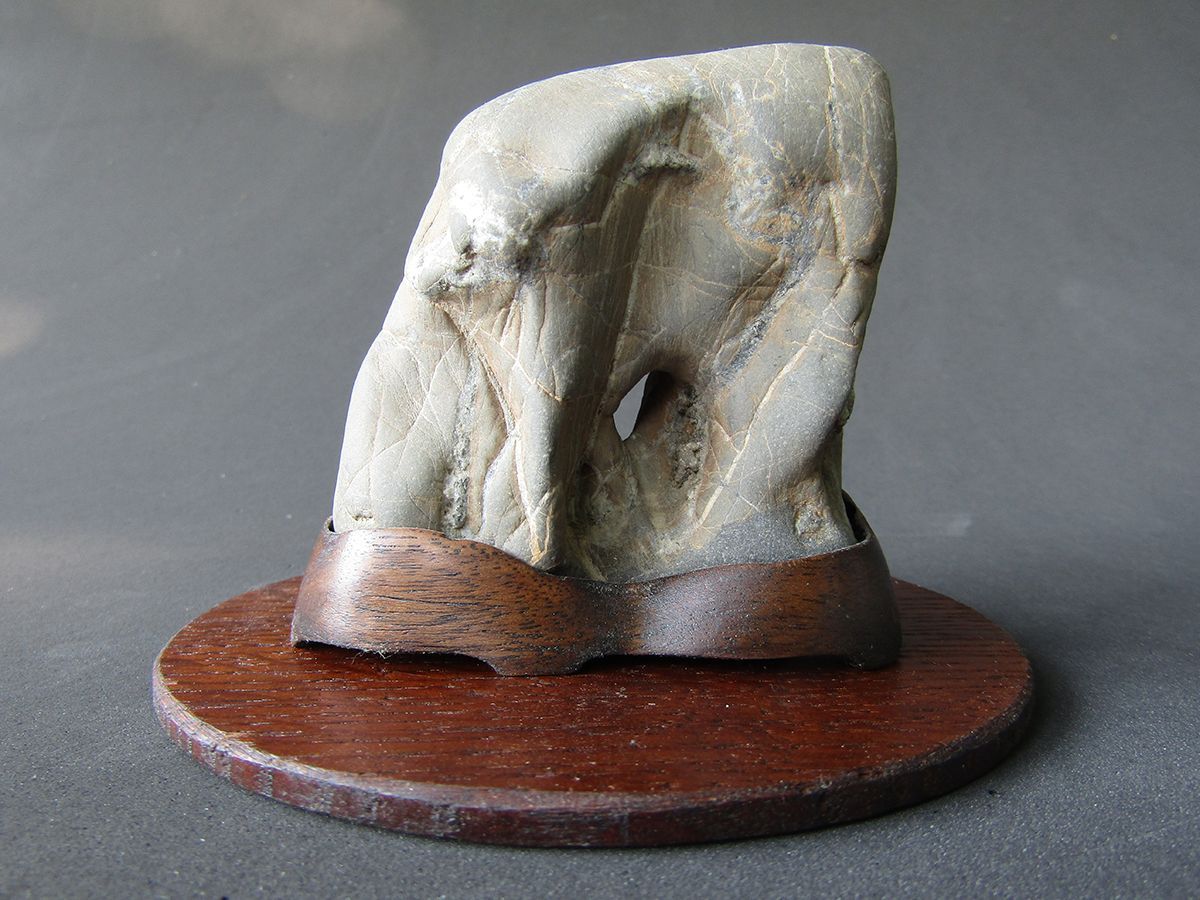North America Viewing Stones: Canada
Do You Speak to Your Stones?
By Sylvain Chabot, Québec, Canada; Translated from French to English by Joseph Pompa
I’m not passionate enough to do so however I like to listen to them, but not with my ears but with my eyes. With humans, voice and non-verbal gestures are used to communicate. The exchange of information is quickly understood by each other most of the time. Plants use a slower pace but if we know how to listen to them with our eyes, they can transmit information such as problems of drought, various diseases, and insect propagation. With stones, we are talking of a totally different time-space that goes back tens, hundreds, or even thousands of years. To be able to listen well, we must slow down the rhythm and adjust the communication mode accordingly.
Stones send us a multitude of information and we must learn to decode and interpret this data to improve our appreciation. Each stone can tell us three types of stories. First, the history of its transformation from raw material to the current result. There is no magic here. Every line that can be seen is the consequence of wind, water abrasion, erosion, snow, and the various movements of the stone. ‘Once upon a time there was a common pebble that turned into a lovely and charming stone over time with the help from Mother Nature...’
Why does a song, a piece of music, a picture, a canvas, a sculpture or a suiseki give us emotion? Indeed why? How can we obtain the same result with our stones? I will not cover the basic principles of stone evaluation here since the subject is well documented on the internet and in books. It is clear that all elements must be well controlled and to achieve this, I invite you to analyze and pay attention to details of the many stones in books, on the Internet and at exhibitions. To appreciate stones well, it is preferable to master the technical aspect to such an extent that it becomes second nature in our subconscious. The same way we walk and breathe without thinking about it. We must be able to clear our brains from the technical aspect of evaluation and identify the story the stone wants to convey. We must identify the message, the atmosphere, the scene, the moment, the situation, the movement, etc. What do we feel, where are we, in what mind frame are we when we appreciate the stone?
In an exhibition, it is the author who prepares the stage to tell a story to the audience. To do so, we use accessories. First, the selection of the daiza or suiban has an impact on the environment of the stage. With a suiban you can transmit an impression of a lake, a seaside, a meadow, a desert, etc. More subtly the daiza can also convey emotion to the presentation. It can be static or dynamic and highlight a focal point or empty spaces. It can convey a lighter emotion for a lighter stone and more expressive emotion for a more pronounced stone. The table or tray has also a role to play in the story. The style, the dimension, the empty spaces and its height all have an important role to play in the story. A scroll will transport the viewer into space-time to present a season, a movement, the time of day and create an atmosphere. A companion plant will link the vegetation with the location of the landscape. For example, a cactus does not have the same effect as a sea plant. The selection of accompanying objects and its size will contribute to give scale to the presentation. For example, birds will make the scene appear closer whereas a boat will make the scene appear further away. It is therefore important to properly choose elements so that the story is readable for the majority of spectators. It’s the combination of details that will make the emotion rise.
I will now transport you to another dimension and transfer the message the stone conveys on human life. The stone can inspire us in our own life or life in general. For example, take this cascading stone and see the link that inspired me:
A cascade
At the end of this plateau
A cascade
Do not dive
Even if the current attracts us
Even if the ground crumbles under our feet
It must be seen as a new beginning
See it as an access to another world
Access to another life
Dive but towards a better world
Turn tears
In a torrent of happiness

Light
The image of strength is projected
But life sometimes
Sends us empty passages
We must learn to accept this
And recognize it in others
These moments must be identified
To be able to control and contain them
Never forget that the light
Is just across the tunnel
Some people associate meditation and religion. It is possible that a stone can make us live emotionally in another current than religion. Basically, the stone must be the main inspiration. It must direct the author for a story to tell but for that to happen, we must first learn to read with our eyes.

